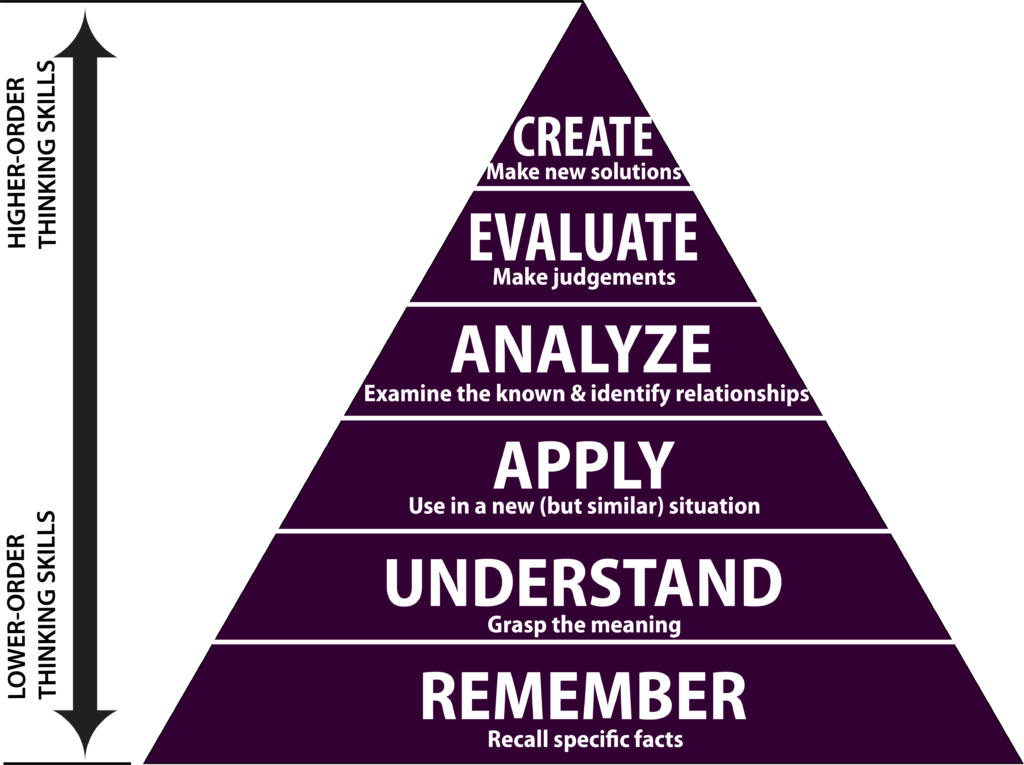
An often repeated saying in the business world is “Nothing is constant except change.” Companies are challenged to respond to ever changing economic conditions, customer preferences, technological advances, regulatory requirements and competitive threats.
Businesses rely on commercial business leaders to make smart decisions to position their company for future success. The challenge is always to respond better and faster than ever before. So, it is essential that these leaders have the mental agility within themselves in order to propel their companies ahead.
In this article, we will discuss the framework that I have chosen to build the strategic thinking skills needed to assimilated new information quickly, synthesize data from different sources to detect patterns and trends, and extrapolated ways to exploit opportunities and avoid consequences.
Strategic Thinking Competency
One solution is to provide Leadership & Development (L&D) Training to build and sharpen management performance. A challenge is that, after training, managers will need to recognize a situation where this training needs to be applied and to apply the training to new situations. Thus, regardless of whether the business need requires soft skills or hard skills, it is essential that leaders attain high cognitive levels of understanding so that the training is effectively applied on-the-job.
Consider a case where commercial leaders needed to respond to changes in policy that would impact their ability to grow sales in a specific country. The change would require these leaders to elevate their cognitive abilities through several levels of learning in order to respond. They would need to be aware of the change and when it will become mandatory, they would need to be able to understand the change itself, they would need to anticipate how this change impacts their company, and then they would need to define a path forward that minimizes the negative impact or, better still, work on an angle to convert this change into an opportunity to create profitability as a result of this policy change.
As something as fundamental as a policy change requires managers to think beyond the basic remember-and-recall level of understanding to extrapolating beyond what is know to position the company for success, I feel that achieving high cognitive levels that enable leaders to apply, relate, and create solutions is essential. As a result, my quest was to identify the right framework for developing training that taps into higher order thinking.
Revised Blooms Taxonomy vs Webb's Depth of Knowledge (DOK)
Two frameworks were considered, the Revised Bloom's Taxonomy and Webb's Depth of Knowledge.
Revised Bloom's Taxonomy
- The lowest (and simplest) level is Remember. Verbs associated with Remember are define, recite, and describe.
- The highest (and most advanced) level is Create. Verbs associated with create are design, modify, and invent.
- For example, an assignment for educators looking to see if learners have a basic understanding of a term lawnmower may ask them to define it. And, a higher level lesson might ask students how a lawnmower might be modified to cut grass taller.

Webb's Depth of Knowledge (DOK)
- Using the lawnmover example, the highest level of thinking is if learners were able to ask students how a lawnmower can be modified to trim shrubs or other potential uses of a lawnmower except lawn work.
Webb's Depth of Knowledge (DOK) Framework
| LEVEL1 REMEMBER -> | LEVEL4 - EXTENDED THINKING |
| LEVEL2 SKILLS & CONCEPTS -> | LEVEL4 - EXTENDED THINKING |
| LEVEL3 - STRATEGIC THINKING -> | LEVEL4 - EXTENDED THINKING |
Here are some factors considered when choosing an instructional framework.
It's Complicated
The world of work is complicated. Solutions have more than one answer. And, questions require probing at more than one level to successfully address it. The Bloom's framework is based on a hierarchy. And, as such, learners must be able to show incremental progress by mastering one level before moving on to the next. (Think of a computer game with levels.) In the world of work, emphasis is placed on achieving the desired outcomes. The DOK is not a hierarchical taxonomy. Instead, it requires learners to do what they need to do in order to achieve the desired outcome. In the world of work, emphasis is placed on achieving the desired outcomes and is flexible and open-ended with regards to following a specific path to get things done. Secondly, work is compartmentalized between roles, so an operator may actually do lower level thinking roles and a senior manager will be assigned to high level thinking roles. So, when it comes to dealing with complexity, The DOK model is preferred.
Get to the Point
Even when learning something new for the first time, professionals rarely start with memorization and recall and level up. They're days are long and full, so typically leaders want to know what needs to be solved and then work towards resolving it with training only if and when needed. So, much of the preamble can and should be skipped. And the learning objectives need to be started as a meaningful business outcome.
It Depends
In business, the right action to take depends o the circumstances. So, then, how does one assess learning? Bloom's taxonomy is based on cognitive ability, whereas Webb's DOK is “focused more on the context—the scenario, the setting, or the situation—in which students are expected to express the learning,” according to Miller (2018). The flexibility and focus of Webb's DOK are better suited to corporate training.
Influential Game Changer Aspirations
A dream of many in business is to create innovative solutions and bring them to market better or faster than competitors. And, the extended thinking phase of Webb's DOK is focused on extending thinking by applying established concepts in different ways. This approach is the most compelling reason to favor Webb's DOK framework over the alternatives.
Do you agree with this assessment? If you disagree, why? I'd love to hear what you think.
Author Information
Felicia Littlejohn, Ph.D., is Learning and Development (L&D) professional, leadership coach, and former commercial business leader who empowers others to achieve their goals. Her work in leadership development, coaching, and strategy consulting has helped businesses, teams, and professionals to upskill, cultivate leadership potential, enhance performance, and overcome growth hurdles. Felicia is a Certified Professional Coach (C.P.C.) who holds a Ph.D. in Engineering, an M.B.A. in Marketing, and is currently pursuing an M.Ed. in Instructional Design.